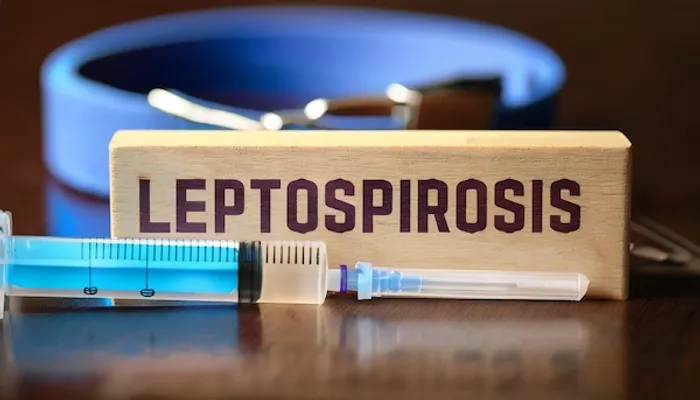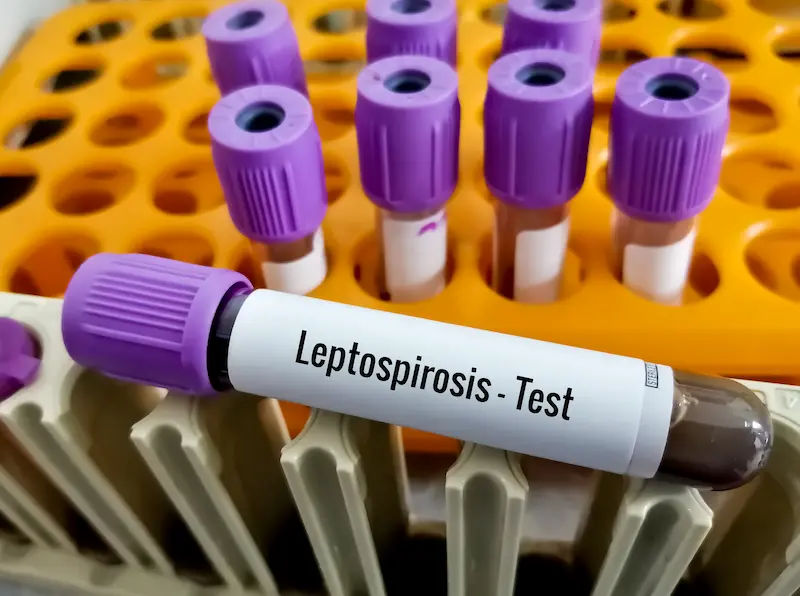What Leads To Signs Of Leptospirosis?
Discover the causes and transmission of Leptospirosis, the bacterial infection spread through animal urine and contaminated water. Learn to recognize the initial flu-like symptoms and signs of severe Weil's disease.


Introduction
Leptospirosis is a bacterial infection you can catch from water or soil contaminated with the urine of infected animals—most often rats, but also dogs, cattle, and pigs. After heavy rains or floods, the risk climbs, and the illness can look a lot like the flu or dengue at first. So what actually leads to the signs of leptospirosis, and how do mild aches turn into serious problems like jaundice or kidney issues in some people?
This guide breaks down, in plain language, how exposure happens, what the bacteria do inside the body, and which early symptoms to watch for. You’ll learn about real-world risk scenarios—like wading through floodwater, working on farms, or swimming in lakes—plus how doctors diagnose leptospirosis and the treatments that work. We’ll also cover prevention that fits everyday life, from protective gear and wound care to rodent control and safe cleanup after floods. If symptoms persist beyond a week or you notice severe warning signs, consult a doctor online with Apollo 24|7 for further evaluation. Understanding how leptospirosis develops helps you act early, get the right tests, and prevent complications.
Leptospirosis at a Glance
Leptospirosis is an infection caused by spiral-shaped Leptospira bacteria found in the urine of infected animals. People become infected when the bacteria enter through cuts, abrasions, or mucous membranes (eyes, nose, mouth), often via contaminated water or mud . It occurs worldwide but is most common in tropical and subtropical areas, especially after monsoon rains or floods that spread animal urine into water sources.
Quick facts to anchor the topic:
- Global burden: Around one million human cases and tens of thousands of deaths are estimated annually, with outbreaks regularly reported in Asia, Latin America, and the Pacific.
- Seasonality: Risk spikes during rainy seasons and post-flood periods when people come in contact with contaminated floodwater.
- Spectrum of illness: Many infections are mild or even subclinical, but severe cases—known as Weil’s disease—can cause jaundice, kidney failure, bleeding, and, less commonly, life-threatening lung hemorrhage.
- Time course: The leptospirosis incubation period is typically 5–14 days, but can range from 2–30 days.
Why this matters for you: Because leptospirosis symptoms in humans often resemble common seasonal illnesses (flu, dengue), recognizing exposure risks (like recent floodwater contact) is the key that prompts timely testing and treatment. That insight can prevent complications and speed recovery.
Consult a Top General Physician
From Exposure to Symptoms: How Leptospirosis Unfolds?
Meet the bacteria (Leptospira) and serovars
Leptospira are corkscrew-shaped bacteria (spirochetes) with many serovars that prefer moist environments. They survive for weeks in water and mud, especially in warm climates. Different serovars are associated with different animal reservoirs—rats, cattle, pigs, and dogs—driving local patterns of infection.
Incubation and biphasic illness: septicemic vs immune phases
After exposure, the bacteria enter the bloodstream and spread to organs. The incubation period averages 5–14 days. The illness often follows two phases:
- Septicemic phase (days 1–7): Sudden fever, chills, severe headache, muscle aches (notably calf and lower back), conjunctival suffusion (red eyes without pus), nausea, and sometimes rash. Leptospira can be detected in the blood and cerebrospinal fluid at this stage, making PCR particularly useful early.
- Immune phase (days 7+): Antibodies develop; fever may recur. Meningitis-like symptoms and organ involvement can appear. Serology (IgM ELISA, MAT) has become more reliable now.
Why some progress to Weil’s disease or lung hemorrhage?
Severe disease reflects a combination of bacterial burden, host immune response, and perhaps specific serovars. In Weil’s disease, prominent liver and kidney dysfunction is leading to jaundice and rising creatinine; platelet counts can fall, increasing bleeding risk. A minority develop severe pulmonary hemorrhage syndrome—sudden shortness of breath and coughing blood—associated with high fatality if not rapidly treated. Understanding this pathway clarifies why early, appropriate antibiotics can blunt disease progression and why timing matters for tests.
Unique insight: What feels like “just flu” can be different if your calves ache intensely, your eyes look red without discharge, and you recently waded through floodwater. Those seemingly small clues tell a bigger story about exposure and the disease phase you’re in.
How Leptospirosis Spreads: Sources and Real-life Scenarios?
Floodwater, stagnant water, and recreational freshwater
After heavy rains, urine from infected animals washes into streets, fields, and homes. Walking through floodwater with open skin or even intact but softened skin increases risk, as does swallowing splashed water. Recreational exposures—swimming, kayaking, triathlons in lakes or rivers—have caused clusters; for example, adventure races and triathlons have been linked to outbreaks when water was contaminated.
Rodents (“rat urine disease”) and urban risks
Rats are major reservoirs. In dense urban areas with poor sanitation, leptospirosis spreads when rat urine contaminates puddles, markets, and food storage. Simple steps like sealing food containers and clearing clutter can reduce rodent presence—and your exposure.
Pets and livestock: dogs, cattle, pigs
Dogs can get leptospirosis and shed bacteria before they appear ill. Vaccination reduces disease in dogs, though it doesn’t cover all serovars.Livestock, especially cattle and pigs, can also carry Leptospira, exposing farmers and slaughterhouse workers.
Travel, triathlons, and adventure sports
Travelers to tropical destinations who swim or wade in fresh water, cave, or trek through paddy fields face higher risk. Several well-documented outbreaks followed mass water events in warm climates. If you’re planning such activities, learn local risks and consider prophylaxis guidance for high-risk scenarios.
Who Is at Higher Risk—and When?
Occupations: farmers, sewer workers, garbage collectors, vets
People with frequent contact with animals or wet environments are at increased risk: agricultural workers, sewer and sanitation workers, slaughterhouse staff, veterinarians, and those handling animal waste. Wearing waterproof boots and gloves and practicing hand hygiene can significantly lower risk.
Monsoon season, tropical climates, and poor sanitation
Leptospirosis thrives where it’s warm, wet, and sanitation is limited. Post-flood crowded shelters, shared latrines, and water stagnation create perfect conditions for transmission and outbreaks. Communities in flood-prone zones benefit from early warning systems and pre-positioned protective supplies.
Cuts, abrasions, and mucous membrane exposure
Even small skin breaks or chafed skin increase susceptibility. Splashing water into the eyes, nose, or mouth also allows entry. That’s why goggles, masks, and quick cleansing matter during cleanup.
Children, older adults, and pregnancy
Children often play outdoors and may swallow water; older adults may have comorbidities (kidney, heart disease) that worsen outcomes. Data on pregnancy are limited, but febrile zoonoses can pose risks—prompt evaluation is prudent.
- Unique insight: Think of risk as a triangle—environment (recent rain/flood), exposure (contact with contaminated water/animals), and entry points (skin/mucosa). If two sides are present, act as if risk is high and prevent the third.
Recognizing the Signs: Early Symptoms vs Red Flags
Early non-specific symptoms that mimic flu and dengue
Typical early symptoms include sudden fever, chills, severe headache, muscle aches (especially calves and lower back), nausea, vomiting, diarrhea, and red eyes (conjunctival suffusion). These overlap with dengue and influenza, but calf pain plus red eyes after freshwater exposure is a valuable clue.
Severe disease signs: jaundice, kidney failure, bleeding
Red flags include yellowing of the skin/eyes (jaundice), very dark urine or reduced urine output (kidney involvement), chest pain, shortness of breath, coughing blood, confusion, or severe bleeding tendencies. Weil’s disease combines jaundice, renal failure, and bleeding risk; severe pulmonary hemorrhage can be rapidly fatal without urgent care.
How to tell leptospirosis apart from dengue, malaria, flu?
- Dengue: More likely marked retro-orbital pain, rash, and profound low platelets; travel or mosquito exposure is key. Leptospirosis more often shows calf tenderness and red eyes without discharge; exposure is water/animal urine.
- Malaria: Cyclic fevers, anemia; link to mosquito exposure in endemic areas.
- Flu: Respiratory symptoms dominate; exposure history to water/animals usually absent.
If symptoms persist beyond two weeks, consult a doctor online with Apollo 24|7 for further evaluation. Early clinical suspicion based on exposure history prompts correct testing for leptospirosis symptoms in humans.
Getting a Diagnosis: Tests and Timing
Early detection with PCR vs later IgM/MAT serology
- PCR: Detects bacterial DNA in blood, most useful in the first week of illness (septicemic phase) before antibodies arise.
- IgM ELISA: Antibodies typically detectable after day 5–7; sensitivity rises in the second week .
- MAT (Microscopic Agglutination Test): The reference standard requiring paired samples; titers rise in convalescence. Often used in reference labs.
Supporting labs: LFTs, RFTs, CBC, urinalysis
Abnormal liver function tests (elevated bilirubin, transaminases), kidney markers (creatinine), low platelets, and urinalysis findings (protein, blood) support the diagnosis and signal severity. Chest X-ray may show infiltrates if lungs are involved.
When to test, when to repeat, and why timing matters?
If you test too early with serology, results can be negative—PCR is better in week 1. If week 1 tests are negative but suspicion is high, repeat serology in 5–7 days or send paired samples for MAT. Doctors often order both PCR and IgM if day-of-illness timing is uncertain.
Convenient testing and telehealth support
In addition to leptospirosis PCR or IgM, your clinician may order baseline LFTs, RFTs, CBC, and electrolytes. Apollo 24|7 offers a convenient home collection for tests like LFTs, kidney function, and leptospira IgM (where available). If you’re unsure about timing or which test is right, a quick teleconsult can help you choose the next best step.
Treatment That Works: Antibiotics and Supportive Care
Mild disease: doxycycline or amoxicillin
For uncomplicated cases treated early, oral doxycycline or amoxicillin are commonly used and shorten the course of illness. Treatment is most effective when started promptly after clinical suspicion, even before confirmatory results if exposure risk is clear.
Severe disease: IV penicillin/ceftriaxone and ICU care
Hospitalization is required for jaundice, kidney failure, severe dehydration, bleeding, or respiratory distress. Intravenous penicillin G or ceftriaxone are standard options; dialysis, ventilation, and transfusions may be needed for complications. Mortality is linked to how quickly severe cases receive advanced care.
Post-exposure prophylaxis for high-risk exposures
Doxycycline prophylaxis may be considered for short-term, high-risk exposures (e.g., flood responders, adventure race participants) when local guidelines support it . It’s not a substitute for protective measures, but it can reduce illness risk. Talk to a clinician about risks, benefits, and alternatives based on your health profile. If your condition does not improve after starting treatment, book a physical visit to a doctor with Apollo 24|7.
- Unique insight: Start treatment based on likely exposure plus symptoms during monsoon season rather than waiting for confirmatory results—your recovery and risk of complications may hinge on that head start.
Prevention You Can Practice Today
Protective clothing, wound care, and safe water habits
- Wear waterproof boots and gloves during cleanup or farm work.
- Cover cuts with waterproof dressings; wash exposed skin promptly with soap and clean water.
- Avoid swallowing water while swimming; choose safe, chlorinated pools over lakes/rivers during outbreaks.
- Boil or treat water if drinking sources may be contaminated.
Rodent control at home and in the community
- Store food in sealed containers; dispose of garbage promptly.
- Eliminate clutter and seal gaps; fix leaks and remove standing water.
- Community-level sanitation and waste management reduce rat populations and leptospira bacteria in water.
Flood cleanup do’s and don’ts
- Do wear PPE: rubber boots, gloves, eye protection, and a mask if spraying water.
- Do disinfect floors and surfaces (e.g., 0.5% chlorine solution) after removing sludge.
- Don’t wade barefoot; don’t pressure-wash without eye protection.
- Launder clothing separately after cleanup; shower promptly.
Vaccination for dogs and livestock
Vaccinating dogs reduces disease and shedding; discuss schedules with your vet. Some countries use livestock vaccines to lower herd carriage and occupational risk. Remember: vaccines don’t cover every serovar, so other precautions still matter.
Special Situations and Case Snapshots
After urban floods: outbreaks in slum areas
Following major floods, cities from Mumbai to Manila and Rio have reported leptospirosis spikes. Overcrowding, standing water, and rodent infestations are drivers; targeted PPE distribution and rapid diagnostics reduce deaths.
Athletes and adventure travelers
Past outbreaks have followed triathlons and adventure races in warm freshwater lakes and rivers—participants developed fever and myalgia a week later. Prevention includes avoiding swallowing water and showering immediately after events; consider prophylaxis for high-risk venues.
Farmers, paddy workers, and field exposures
Standing water in paddy fields, barefoot work, and minor skin cuts set the stage for infection. Simple changes—waterproof boots, gloves, and post-work washing—are high-yield, low-cost protections.
Households with dogs and backyard livestock
Kennel workers and pet owners should be alert to sick dogs (lethargy, vomiting, jaundice). Keep vaccination current, manage pet waste carefully, and separate animal areas from children’s play spaces.
What to Do If You Suspect Leptospirosis?
Immediate steps at home
- Rest, hydrate, and track temperature and urine output.
- Avoid self-medicating with NSAIDs if there’s a bleeding risk; use paracetamol for fever unless advised otherwise.
- Note exposures: floodwater, freshwater swimming, rats, pets, or farm work.
When to seek medical care—and what to share with your doctor?
Seek care urgently for jaundice, severe shortness of breath, reduced urination, confusion, or bleeding. For mild-to-moderate symptoms with relevant exposure, book a teleconsult: If symptoms persist beyond a week or worsen, consult a doctor online with Apollo 24|7 for further evaluation. Share:
- Onset date (for test timing)
- Type and date of exposure (floodwater, dogs, livestock)
- Recent travel and vaccinations
- Any kidney or liver conditions, pregnancy status, and medications
- Monitoring recovery and preventing reinfection
- Complete your full antibiotic course. Recheck labs (LFTs/RFTs) if they were abnormal initially.
- Strengthen prevention—rodent control, PPE, vaccination of pets—to avoid repeat infections.
Conclusion
Leptospirosis is common, preventable, and treatable—once you know what to look for. The signs arise from a straightforward chain: contaminated water or soil, an entry point on your body, and time for the bacteria to spread. Early on, leptospirosis can resemble flu or dengue, but a few details—calf muscle pain, red eyes without discharge, and recent exposure to floodwater or freshwater—can tip you off. That awareness helps you and your clinician time the right tests (PCR in the first week, IgM/MAT later) and start antibiotics promptly to avoid complications like jaundice, kidney failure, or bleeding.
Prevention is equally practical: waterproof boots and gloves for cleanup, covering cuts, avoiding swallowing water during freshwater activities, and controlling rodents around your home. Pet owners can further reduce risk by vaccinating dogs and handling animal waste carefully. If you’re in a high-risk occupation or planning water-based adventure travel, speak with a clinician about tailored precautions, including whether doxycycline prophylaxis makes sense.
If your condition does not improve after trying these measures—or if severe symptoms appear—book a visit with a doctor through Apollo 24|7. They can guide testing, prescribe treatment, and arrange home collection for key labs like kidney and liver function. With the right knowledge and timely action, most people recover fully from leptospirosis and can stay safer in future rainy seasons.
Consult a Top General Physician
Consult a Top General Physician

Dr. Rajib Ghose
General Physician/ Internal Medicine Specialist
25 Years • MBBS
East Midnapore
VIVEKANANDA SEBA SADAN, East Midnapore

Dr. Ajay K Sinha
General Physician/ Internal Medicine Specialist
30 Years • MD, Internal Medicine
Delhi
Apollo Hospitals Indraprastha, Delhi
(200+ Patients)

Dr. Moumita Roy
General Physician/ Internal Medicine Specialist
8 Years • MBBS , MD (Anesthesiology)
Kolkata
VDC Clinic, Kolkata

Dr. Santanu Mandal
General Physician/ Internal Medicine Specialist
17 Years • MD (Physician), DNB (General Medicine)
Kolkata
MCR SUPER SPECIALITY POLY CLINIC & PATHOLOGY, Kolkata
(25+ Patients)

Dr. Abhishek Ranjan
General Practitioner
4 Years • MBBS
Kolkata
VDC Clinic, Kolkata
Consult a Top General Physician

Dr. Rajib Ghose
General Physician/ Internal Medicine Specialist
25 Years • MBBS
East Midnapore
VIVEKANANDA SEBA SADAN, East Midnapore

Dr. Ajay K Sinha
General Physician/ Internal Medicine Specialist
30 Years • MD, Internal Medicine
Delhi
Apollo Hospitals Indraprastha, Delhi
(200+ Patients)

Dr. Moumita Roy
General Physician/ Internal Medicine Specialist
8 Years • MBBS , MD (Anesthesiology)
Kolkata
VDC Clinic, Kolkata

Dr. Santanu Mandal
General Physician/ Internal Medicine Specialist
17 Years • MD (Physician), DNB (General Medicine)
Kolkata
MCR SUPER SPECIALITY POLY CLINIC & PATHOLOGY, Kolkata
(25+ Patients)

Dr. Abhishek Ranjan
General Practitioner
4 Years • MBBS
Kolkata
VDC Clinic, Kolkata
More articles from Leptospirosis
Frequently Asked Questions
How do you get leptospirosis?
You get leptospirosis when Leptospira bacteria from animal urine—often rats—enter through cuts, abrasions, or mucous membranes after contact with contaminated water or soil. Floods and recreational freshwater activities increase risk.
What is the leptospirosis incubation period?
The incubation period is usually 5–14 days (range 2–30). Symptoms often start suddenly with fever, headache, and muscle aches, particularly in the calves.
Which test is best for diagnosing leptospirosis?
In the first week, PCR on blood is most useful. After day 5–7, IgM ELISA and the MAT test become more reliable. If early tests are negative but suspicion is high, repeat testing is advised . Apollo 24|7 offers a convenient home collection for many supporting tests.
Is leptospirosis from dogs common?
Dogs can get and shed leptospirosis. Vaccination helps reduce disease and shedding, but does not cover all serovars, so hygiene and rodent control remain important.
What antibiotics treat leptospirosis?
Mild disease is often treated with oral doxycycline or amoxicillin. Severe disease requires intravenous antibiotics (e.g., penicillin G or ceftriaxone) and supportive care in hospital . If symptoms persist beyond two weeks, consult a doctor online with Apollo 24|7 for further evaluation.

